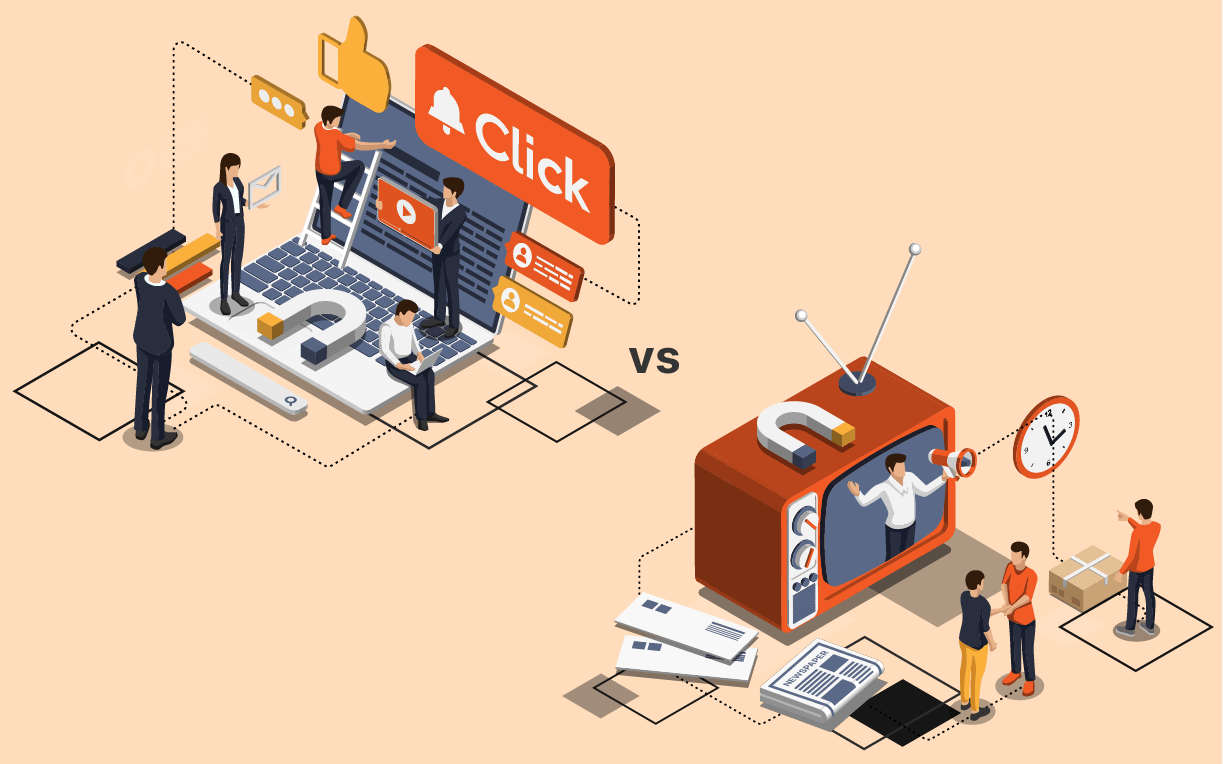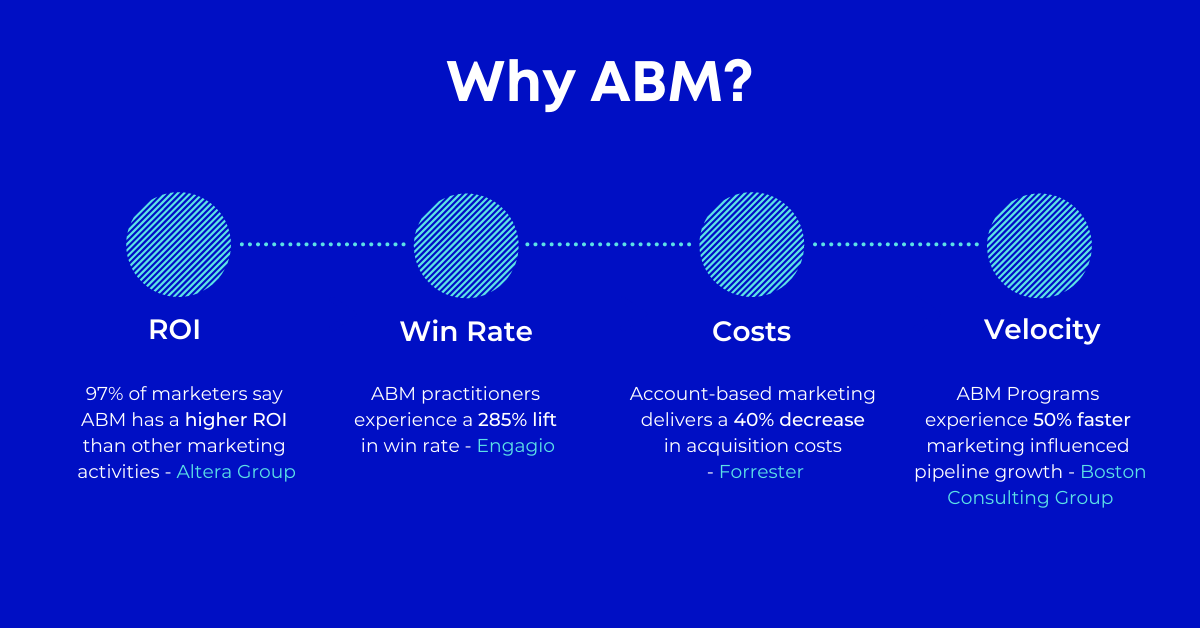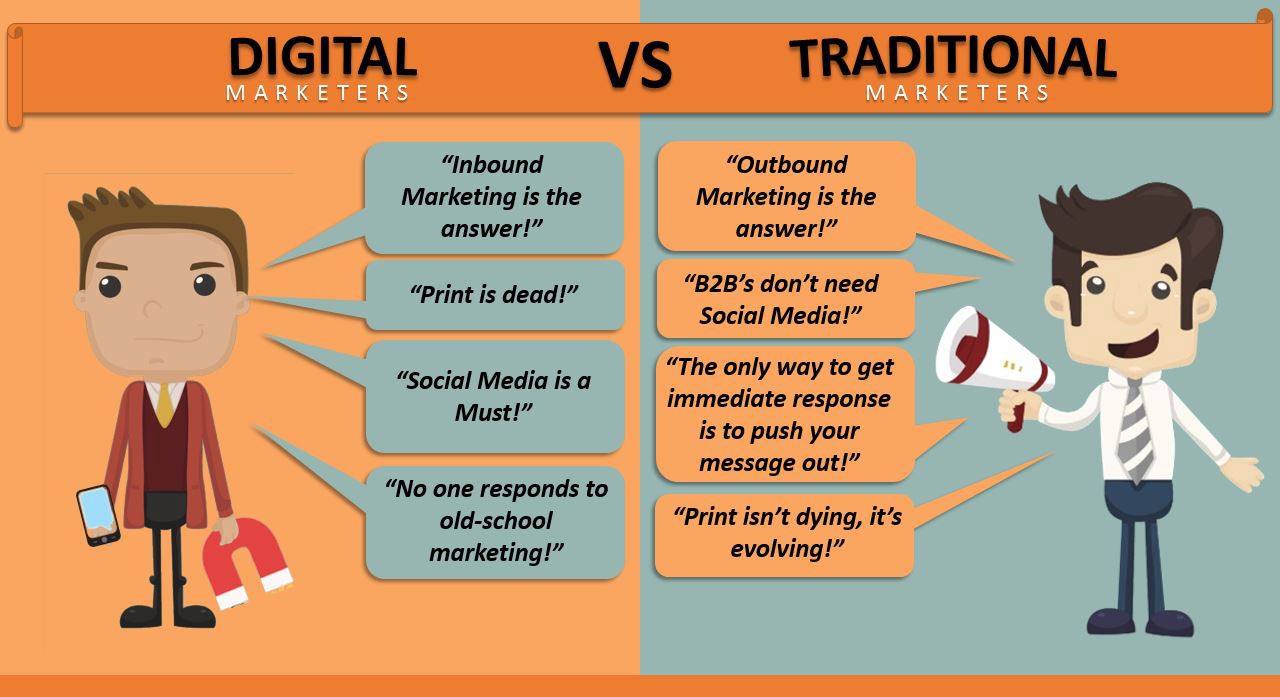
10 Emerging Performance Marketing Trends You Might Be Overlooking
August 1, 2025
Cutting-Edge Trends in B2B Lead Generation You Should Know
August 1, 2025Account-based marketing (ABM) and traditional marketing are two different strategies that businesses use to reach and engage with potential customers. While they share some similarities, they have distinct objectives and require different approaches. In this blog post, we’ll take a deeper dive into the differences between ABM and traditional marketing, and how they can be used together to create a more comprehensive approach to customer acquisition.
Traditional marketing is a broad-based approach that seeks to reach as many people as possible. It’s centered on creating awareness and building a brand, rather than targeting specific accounts or individuals. Traditional marketing techniques include television and radio advertising, print ads, direct mail, and trade shows. The goal of traditional marketing is to build a brand and generate leads through a wide reach.

ABM, on the other hand, is a targeted approach that focuses on specific accounts or individuals. It’s a strategic, holistic approach that aligns sales and marketing teams to engage a specific set of accounts and create personalized, highly relevant campaigns that drive engagement and build relationships. ABM campaigns are typically aimed at decision-makers within a company, such as the C-suite, and are designed to create a tailored message to the specific needs of the account, not just the general market.
One of the key benefits of ABM is that it allows businesses to focus their efforts on the accounts that are most likely to convert into customers. Instead of trying to reach a broad audience, ABM allows businesses to zero in on the accounts that are most likely to be a good fit for their products or services. This means that businesses can get more out of their marketing efforts, since they are targeting the accounts that are most likely to convert.
ABM also allows for better collaboration and alignment between sales and marketing teams. By working together to target specific accounts, both teams can ensure that they are working towards the same goal and providing a consistent message throughout the customer journey. This improves the chances of conversion and can lead to a higher return on investment (ROI).

Another benefit of ABM is that it allows businesses to create highly-personalized campaigns. By focusing on a select group of accounts, businesses can create campaigns that are tailored to the specific needs and interests of those accounts. This can lead to higher engagement and conversion rates, since the campaigns are more relevant to the target audience.
Traditional marketing, while it can reach a broader audience, tends to be less effective when it comes to generating a high ROI. It’s not tailored to specific accounts or individuals, making it less effective in converting leads into customers. Traditional marketing campaigns tend to be less effective at generating high-quality leads compared to ABM.
It’s worth mentioning that ABM is a more resource-intensive approach than traditional marketing. Targeting specific accounts and creating a personalized approach takes more time and effort, and it may not be suitable for all businesses, especially small businesses with limited resources.
While ABM and traditional marketing are different in their approach and goals, they can also complement each other. Traditional marketing can be used to create awareness and build a brand, while ABM can be used to convert those leads into specific accounts and create a more personalized approach. The two approaches can work together to drive revenue for a business.

In summary, ABM is a targeted approach that focuses on specific accounts and aims to build relationships, while traditional marketing is a broad-based approach that focuses on building brand and generating leads through a wide reach. Both approaches have their own unique benefits, but ABM is more resource-intensive and may not be suitable for all business, while traditional marketing may be less effective in generating a high ROI. A combination of both approach can be a more comprehensive approach to customer acquisition.


